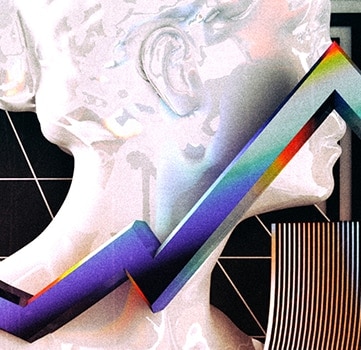The report begins by building out an empirical framework to pinpoint the drivers of the global art market over the past 15 years including an analysis of the huge impact of Chinese demand on global art prices. We analyze where Chinese demand within the global art market may be heading between chapters one and two as the Chinese economy faces a period of significant transition.
The empirical framework outlined in chapter one includes multiple factors such as simple price growth, the numbers of artists sold at auction, lots offered per artist, the globalization of the market and the burgeoning number of auction houses. For whatever reason – including, but not limited to, growing wealth inequality or evolving preferences for art consumption – the distribution of art prices has exhibited an increasingly fat tail. Our authors speculate whether a cooling of top auction prices would provide a healthy rebalance from the upper deciles to the middle of the market, which would be a significant positive for the broader industry.
Later chapters in the report examine the extent to which art can credibly be viewed as an “asset class”. Expert authentication, appraisal and public auction still set works of art apart from commodities or traditional securities. Even among other collectibles, evaluating art is more complex than evaluating classic cars or many antiques. Variability in the collective appetite for individual pieces and classes of art drives an idiosyncratic element into art valuations but a number of common factors do drive returns for art works generally. Looking at over 100 years of data, art has under-performed equities but outperformed bonds. Over time there is a clear link between art prices and the global economy. For example, some of the strongest falls in art prices were observed during World War I, in the early 1930s, following the 1973 oil crisis, in the early 1990s and after the 2008 financial crisis. Overall, we conclude that art deserves a place within illiquid asset holdings for those who would otherwise hold art for many reasons. However, successful investment in art appears to be much more a question of identifying relative value than it is of gaining exposure to the market as a whole.
Other chapters of this report look at the highly topical issue of whether the art market has become saturated with art fairs and at the role of art as collateral for other financial transactions given how record prices, increased globalization and new market entrants have led to the “financialization” of the art marketplace. In today’s environment, the appeal of art for a growing number of collectors comes not only from the prestige of owning significant works but also from its status as a neutral currency.
While there does not seem to be any obvious new candidate — like China or wealth inequality — waiting in the wings to give the global art market its next big leg up, participants in the art market ultimately maintain the option of just enjoying the aesthetics of art itself. In the words of Pablo Picasso, “Art washes away from the soul the dust of everyday life”.
Article06 Nov 2015
The Global Art Market
Perspectives on Current Drivers & Future Trends
This report in our Citi GPS series has been conceived in partnership with Citi Private Bank to address a selection of key issues in the global art market as well as to address the question of whether art can credibly be deemed an “asset class”. The report is arranged into six chapters written by experts and specialists in the art market to whom we are grateful for their collaboration on this project. The detailed biographies of the authors are included at the back of the report.
Click here to view the report in full.
Subscribe to Citi GPS
Keep up to date with our latest insights.
Sign up to receive the latest news from Citi.
Select Preferences


